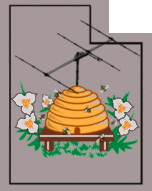 |
| Utah SDR WX |
|
Help support this WebSDR via PayPal - or check, cash, etc. if you don't wish to use PayPal. Find out how!
|
The
Northern Utah WebSDR now has a YouTube channel - see it here! |
30-6 Meters - Omnidirectional antennas
|
This WebSDR is located near Corinne, Utah, about 80 miles (94km) north of Salt Lake City and about 14 miles (23km) east of the Golden Spike National Historic Site.
This WebSDR system has coverage on all U.S. amateur HF, MF and LF bands, 2 meters, the bottom 1 MHz of 6 meters, and several shortwave broadcast bands - see the Technical Info page for more details.
This server (Green) uses omnidirectional antennas to cover the 30, 20, 17, 15, 12, 10 and 6 meter bands, many of which are less likely to be active during the local nighttime - Check the band conditions at the bottom of the web page.
The 2021/2022 User Survey has finished: You may see the results here. |
To invoke this page with a preset frequency and mode, append "/?tune=(freq
kHz)(mode)" to the URL and save it as a bookmark as in: http://[WebSDR's URL]?tune=7200lsb
Additional URL parameters are described on the "FAQ" page here.
If you find that CatSync doesn't work with this WebSDR, add "?10hz" to the URL. There may be other issues with CatSync - read here.
|
| Other WebSDR systems:
Western U.S.: KFS, Half-Moon Bay, CA
Eastern U.S.: K3FEF, Milford, PA, NA5B near Washington DC, N4BBQ, Dalhonega, GA |
More
information about the WebSDR project, including a list of WebSDRs worldwide, can be found at http://www.websdr.org.
|
| The Northern Utah WebSDR Landing Page
Everything you wanted to know about the Northern Utah WebSDR system! |
||
| About this WebSDR and contact info
and Terms and Conditions of use |
||
| Technical Information | ||
| Latest News and known issues | ||
| Northern Utah WebSDR FAQ | ||
| Scientific Research | ||
| Are you having audio problems? Click here! | ||
|
||
|
Featured Project:
Automatic computer audio muting for your HF transceiver.
Stop being driven crazy by the echo and eliminate the need to manually mute the WebSDR audio when you transmit!
|




![[scale]](smeter1.png)